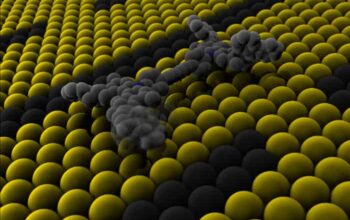High-performance computing (HPC) serves as the cornerstone of modern scientific inquiry and technological advancement, intimately woven into the very fabric of myriad disciplines—from quantum mechanics to climate modeling. As we gaze into the future of HPC, we encounter a rich tapestry woven with several emerging trends, each possessing unique attributes and implications. This trajectory heralds a paradigm shift, wherein traditional computational methodologies entwine with cutting-edge innovations, thereby sculpting a new epoch in high-performance processing.
One of the most salient trends in HPC is the advent of exascale computing. Defined as the capability to perform at least one exaFLOP (equivalent to (10^{18}) floating-point operations per second), exascale systems are the modern-day equivalent of the fabled Philosopher’s Stone—transmuting complex computations into actionable insights. These colossal systems promise unprecedented accuracy and efficiency for scientific simulations, enabling researchers to tackle problems previously deemed insurmountable. With leading entities such as the United States, China, and Europe investing heavily in exascale technologies, the competitive landscape of global computational prowess is being reshaped, akin to tectonic plates shifting beneath our feet.
Equally notable is the evolving architecture of HPC systems, particularly the move towards heterogeneous computing environments. Traditional models relying solely on central processing units (CPUs) are gradually yielding to infrastructures that integrate graphical processing units (GPUs) and specialized processors like tensor processing units (TPUs). This multifaceted approach engenders a remarkable synergy—akin to a symphonic orchestra harmonizing distinct musical instruments. The versatility of such architectures supports a plethora of workloads, enhancing computational capabilities across varied applications, from deep learning to massive data analytics.
The emergence of quantum computing represents another thrilling twist in the HPC narrative. Although still in its embryonic stages, quantum computing holds the promise of solving specific problems at speeds unfathomable by classical computers—perhaps acting as a Schrödinger’s cat in the computational realm. With quantum bits (qubits) harnessing superposition and entanglement, the potential for solving intricate problems, such as drug discovery or complex optimization, is profound. The theoretical elegance of quantum algorithms juxtaposed with practical applications foretells a transformative era for computational science.
Data-centric computing is yet another profound trend gaining traction. In an era where the volume of data generated is staggering, the traditional computational paradigms focused solely on processing power are giving way to architectures optimized for data locality and efficient data transfer. The burgeoning concept of data gravity emphasizes that as datasets grow, they inherently attract more applications, thereby necessitating proximity in processing and storage. By prioritizing data-centric designs, HPC ecosystems can significantly augment performance, lowering latency and ensuring that the analytical machinery can keep pace with the deluge of information.
As HPC systems continue to scale in both performance and complexity, the importance of robust software ecosystems becomes increasingly salient. The future landscape will be defined not just by the hardware capabilities but also the adaptability and innovation embedded in the software paradigms that govern these systems. Containerization, microservices architecture, and advanced orchestration technologies are poised to revolutionize high-performance software development, akin to how the advent of the steam engine propelled the Industrial Revolution. Enhanced programmability and efficiency will facilitate seamless integration of diverse compute resources, fostering a collaborative environment where multicore processing thrives.
Collaboration among disparate scientific communities will also catalyze innovation in HPC. Interdisciplinary initiatives are evolving into the rule rather than the exception. Collaborative projects, often encompassing diverse stakeholders from academia and industry, will proliferate, leading to the cross-pollination of ideas. This synergy can be likened to a grand literary anthology, where distinct narratives converge to create a richer tapestry of knowledge. Collaborative HPC endeavors will enhance the capacity to address complex challenges spanning climate change, public health, and national security.
Moreover, sustainability in HPC practices is emerging as a critical theme. As computational demands escalate, the environmental footprint associated with energy consumption becomes increasingly concerning. The future will necessitate the harmonious incorporation of energy-efficient designs and renewable energy sources within HPC infrastructures. This conscious pivot towards sustainability is akin to the cultivation of a resilient ecosystem, where resource optimization and waste reduction coalesce. Energy-aware computing will not only reduce costs but also align with global sustainability goals, thereby fostering an environmentally conscious technological landscape.
Lastly, we must recognize the implications of artificial intelligence (AI) on HPC. The integration of AI algorithms into HPC frameworks boasts the potential to predict failures, optimize resource allocation, and streamline operations. Employing AI-driven insights gives HPC resources the agility to adapt and evolve, much like an athlete fine-tuning their performance through rigorous training and analysis. The allure of harnessing AI to augment HPC capabilities resonates across sectors, promising transformative outcomes in scientific research and enterprise operations alike.
In conclusion, the future trends of high-performance computing encapsulate a mélange of advancements that intertwine to forge a new horizon in computational science. From the promise of exascale computing to sustainability initiatives, each trend beckons a profound change in how we approach complex problems. As HPC continues to evolve, it rekindles the age-old quest for knowledge and understanding, promising to unlock the mysteries of our universe and propel humanity into an era of unprecedented discovery.










